#françois l'olonnais
Text
Jean- David Nau aka François l'Olonnais - the horrible Buccaneer
Jean-David Nau (c. 1635?- 1670?), known as François l'Olonnais or Fleau des Espagnoles, was considered as one of the most terrible Buccaneers of the 17th century.
Alexandre Olivier Exquemelin ( Exquemelin came to the islands as an indentured servant. From his last master, he learned the skills of a surgeon and later sailed with Henry Morgan), whose book De Americaensche Zee-Rovers, published in 1678, is one of the most important source works on the history of piracy in the Caribbean, describes in the second part of his book the life of L'Olonnais, who was born in the harbour town of Les Sables-d'Olonne in the Bas-Poitou on the French Atlantic coast of unknown date but presumably around 1635, and is regarded as the source for him and his work, but what actually happened should be regarded with caution, even though his statements may well be more trustworthy than others.

François l'Olonnais (x)
After L'Olonnais had come to the Caribbean as an indentured servant at a young age and served his time, he came to the island of Hispaniola and after some time to the Buccaneers and became one of their leaders.
His apparently psychopathic character revealed itself on numerous occasions in the years that followed. When it came to obtaining information of any kind, he personally committed acts of bestial cruelty. One of his "preferences" was to hack his victims to pieces alive with a sabre or loveed it to burn his victims or cut out their tongues or hearts.
He received his first command from the governor of Tortuga, Monsieur de la Place. After some time, l'Olonnais was shipwrecked near Campeche in the Gulf of Mexico. A group of Spanish soldiers attacked him and his crew, killing almost the entire crew. L'Olonnais himself survived by smearing himself with the blood of the others and hiding among the dead. After the Spaniards left, he escaped with the help of some slaves and set off in a boat for Tortuga, where he obtained another boat by trickery. Shortly afterwards, he and his crew took the inhabitants of a small town on the north coast of Cuba hostage and demanded a ransom from the Spanish crown. The governor of Havana sent a ship to kill l'Olonnais' troop. However, the ship fell into the hands of the pirates. L'Olonnais had all but one of the crew beheaded. The man who was spared was to bring a message to Havana in which l'Olonnais declared that from now on he would show no mercy to any Spaniard.
In 1667, l'Olonnais set sail from Tortuga with a fleet of eight ships and a crew of 1,600 pirates to plunder Maracaibo. On the way there, he encountered a Spanish treasure ship off Hispaniola, which he successfully captured. In the process, he brought in rich booty of cocoa, precious stones and more than 40,000 pesos in silver. A second Spanish ship fell into his hands without a fight, along with ammunition, gun powder and 12,000 pesos.
At that time, access from the Gulf of Venezuela to the lake of Maracaibo (and thus to the city itself) was secured by a fortress with 16 cannons. However, L'Olonnais attacked the fortress from the unfortified land side and captured the city. The pirates then proceeded to loot the town, but found that most of the inhabitants had fled and hidden their gold. The pirates tracked down the inhabitants and tortured them until they revealed the hiding places of their possessions. For weeks, the pirates raped, tortured and harassed the townspeople. They removed the cannons from the fortress and destroyed almost the entire city fortifications to allow for a quick retreat. The pirates then turned south towards the village of Gibraltar (Zulia), on the southern shore of Lake Maracaibo, to plunder it too, because many of the town's inhabitants had fled there with their goods.
Although the pirates were outnumbered, they overpowered the garrison of Gibraltar, which is said to have consisted of around 500 soldiers, plundered the village and retreated back to Maracaibo. They demanded a ransom of 20,000 silver pesos and 500 cows and oxen for their departure. In total, they brought 260,000 silver pesos, precious stones, silverware, silk fabrics and a number of slaves in this raid, which they divided among themselves. The damage done in this way was so great that the city, which had previously been a major centre for the export of cocoa, almost ceased to exist.
Word of his attack on Maracaibo and Gibraltar reached Tortuga, and he was henceforth nicknamed "Plage des Spaniers" (French: Fléau des Espagnols). This made it easier for him to recruit participants for his next foray, and so later that year 700 pirates took part in his next attack on the Central American mainland. They headed for the coast of Nicaragua with Cabo Gracias a Dios, but drifted with the current into the Gulf of Honduras when there was no wind. After plundering Puerto Cavallo, l'Olonnais was ambushed by a large number of Spanish soldiers on the way to San Pedro, from which he narrowly escaped. He was, however, able to take some Spaniards prisoner. Exquemelin writes of this:
"He drew his sabre, and with it he cut open the breast of one of these poor Spaniards, and pulling out its heart with his blasphemous hands, bit and tore at it with his teeth, like a wild wolf, and said to the others: I will treat you likewise, if you show me no other way."
In fear of their lives, the surviving Spaniards showed him another way to San Pedro. However, L'Olonnais and his surviving men were repulsed and had to retreat to the ships. In the Gulf of Honduras, they ran onto a sandbank. Unable to get their ship free, they carpentered a new one from the remains, and eventually fell into the hands of the native population in the Gulf of Darién around 1670. Exquemelin writes that:
"they tore him to pieces alive, threw his body limb by limb into the fire, and his ashes into the air."
The seemingly fitting end for such a bestial man.
33 notes
·
View notes
Text
Ryu Number Chart Update: Tropico 2: Pirate Cove
(With bonus Treasure Island!)
Tropico 2: Pirate Cove is a bit of an unusual entry in the Tropico franchise, as instead of playing as president of a fictional island nation during the Cold War and Doing Politics with the Blocs, you're the Pirate King in Pirate Times, running some sort of Pirate Island. Basically the same concept otherwise, though.
Depending on your game mode (and in line with the earlier Tropico games), you can specify your Pirate King's Pirate Identity as one of a number of historical or fictional-but-in-the-public-domain pirates:

Granted, you don't really see your chosen Pirate do anything as a discrete Pirate Unit, but if you're bad at Being A Pirate, you get a little cutscene which seems to depict a first-person view of the Pirate King having apparently been cast-away, with a view of their Pirate Boots:

Does that count? I feel like that counts, probably. I mean, you also get a first-person view cutscene if you're good at being a pirate (the viewpoint's diegetic; some Pirate Folks raise their drinks at you). In other words, if the Pirate King is a Specific Pirate, and the Pirate King is in the cutscene, then the Specific Pirate is in the cutscene. That's math.
The historical and public domain figures that "show up" in Tropico 2 can be found in the chart below:
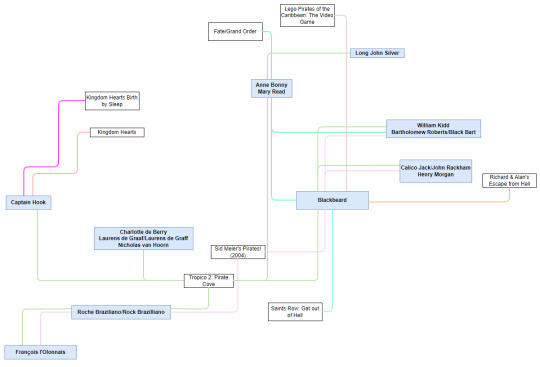
There are multiple ways of getting Ryu into this mess, but the ones I've got a Big Like for are through Kingdom Hearts and Fate/Grand Order, which work out owing to Tropico 2's inclusion of Captain Hook (public domain is public domain), and Fate/Grand Order's inclusion of basically every historical and/or folkloric figure they can shove into their gacha, some of whom are genderswapped because why not and also because it worked for Type-Moon the first time; they're not going to stop now.

(This chart is by no means all-inclusive. There's plenty of Video Game I haven't watched yet, and if I tried to include all the connections that went through Minecraft skins, even only including the DLC dropped through the official "Minecraft" account, the topology would drive me to madness.)
So congrats to Charlotte de Berry, Laurens de Graaf, and Nicholas van Hoorn for making it onto The Chart, but the real MVP of this update is Long John Silver, on account of that he provides a neat way to get into Treasure Island video games. (I don't count Treasure Planet characters as the same characters. Little bit too different. Doesn't really feel right.)
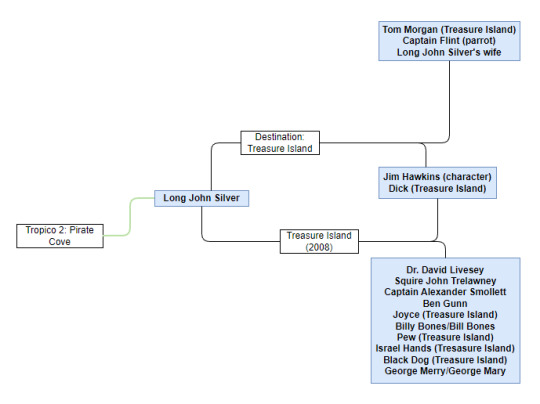
If you've never heard of either of these two video games, that's perfectly fair, frankly. Treasure Island is a 2008 adventure game that serves as a sort of condensed video game version of the book with a bunch of adventure game puzzles added. It's faithful-ish, with the exception of a handful of original characters (including the daughter of Squire Trelawney, who serves romantic interest), and the inexplicable narrative decision to have Dr. Livesey suddenly quaff Evil Juice.

(Image credit: Andrea Pannocchia)
I guess I get what they were going for here? "Ho ho, those folks who know the novel and are expecting the same are going to get a big surprise when they get to the twist we added ourselves!" But also, I feel like if anyone is playing a video game adaptation of Treasure Island, they're probably playing it because it's a video game adaptation of Treasure Island and don't really want an Original Twist.
Though my estimations of What Other People Want have been historically lacking, so what do I know? Nada, is what I know.
Anyway, the other game up there, Destination: Treasure Island, is also a griphy adventure game, though this one's a sequel to the book, instead. Jim Hawkins, presumably doing Jim Hawkins things, gets his day-to-day interrupted by Silversent psittacinunce, just in time also for a troika of pirates from the book to arrive at the scene Bearing Vengeance re: the maroonage they suffered (also from the book). Hilarity ensues, although for some reason in the game Black Dog has been renamed "Yellow Dog" which makes him Not The Same Character, as far as The Chart is concerned. (It's fine; he's covered by the 2008 game anyway.)
It's got 100% less Dr. Livesey, but also 100% less Evil Dr. Livesey. I reckon that balances out.
#Ryu Number#Ryu Number Chart#Ryu#Tropico 2: Pirate Cove#Captain Hook#Roche Braziliano#Rock Brazilliano#François l'Olonnais#Francois l'Olonnais#Charlotte de Berry#Laurens de Graaf#Laurens de Graff#Nicholas van Hoorn#Anne Bonny#Mary Read#Blackbeard#Calico Jack#John Rackham#Henry Morgan#William Kidd#Bartholomew Roberts#Black Bart#Long John Silver#Fate Grand/Order#Minamoto no Yoshitsune#Ushiwakamaru#Namco × Capcom#Namco x Capcom#Kingdom Hearts#Sora
4 notes
·
View notes
Photo
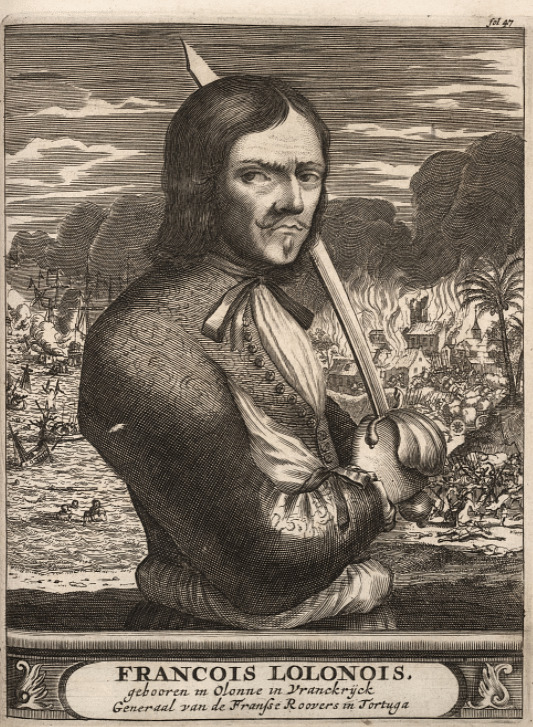
François L'Olonais
François L'Olonais (also spelt L'Olonnais or L'Ollonais, c. 1630-1668), real name Jean-David Nau, was a French buccaneer and pirate who operated from Tortuga on Hispaniola. In 1667, he famously attacked Venezuela, then part of the Spanish Main, and such was his reputation for sadistic cruelty, he was known as the 'Flail of the Spanish'. L'Olonais continued his rampage for plunder in the Bay of Honduras but was ultimately butchered and eaten by local cannibals.
Early Career
Jean-David Nau was born between 1630 and 1635 in Les Sables-d'Olonne on the west coast of France, hence his later nickname François L'Olonais. At the age of 20, he embarked on a life at sea and ended up in the Caribbean. Perhaps unimpressed with the harsh realities of life on a sailing ship, he became an indentured servant on a plantation. After serving for three years, Nau joined the wild band of hunters on Hispaniola who became known as buccaneers for their habit of smoking their meat on grills. The Spanish authorities tried repeatedly to repress the buccaneers, but they resisted these raids, often retreating to the wild interior of the island. Many buccaneers became pirates, and Nau was one of these, perhaps motivated above all by revenge on the Spanish who had killed so many of his brethren hunters.
Continue reading...
32 notes
·
View notes
Text
I love One Piece
And I love real pirates, so I made this blog to share facts about the real pirates who inspired some of the characters.
Gol D. Roger - Henry Every and Olivier Levasseur
Alvida - Awilda
Calico Yorki - Calico Jack Rackham
Zeff - "Red Legs" Greaves
Blackbeard and Whitebeard - Edward Teach Actually Whitebeard is closer to Benjamin Hornigold than Edward Teach
Roronoa Zoro - François L'olonnais
Jewelry Bonney - Anne Bonney
Lafitte - Jean Lafitte
Eustass Kidd - William Kidd
Captain Morgan - Henry Morgan
Basil Hawkins - Basil Ringrose and John Hawkins
Urouge - Oruç Reis
X Drake - Sir Francis Drake
Bellamy - Samuel Bellamy
#one piece#gol d. roger#alvida#calico yorki#one piece zeff#marshall d. teach#edward newgate#roronoa zoro#jewelry bonney#one piece lafitte#eustass kidd#one piece captain morgan#basil hawkins#one piece urouge#x drake#one piece bellamy#henry every#olivier levasseur#calico jack rackham#red legs greaves#edward teach#francois lolonnais#anne bonney#william kidd#henry morgan#basil ringrose#bellamy#sir francis drake
25 notes
·
View notes
Text
Oden = Oda Nobunaga???
This is not a theory or anything, more like just an observation of character inspiration. I probably should have posted this first, because this is the more sensible one instead of my wild theory.
Anyway.
I had wondered if young Oden's story is partly inspired by the younger days of Oda Nobunaga. I mean, I hate to keep harping on this fellow, but his name is kind of the homonym of Oda-sensei's name and he's a very famous samurai in Japan to boot.
I would not be surprised if this fellow was used as inspiration for multiple people in One Piece, but very cleverly hidden. Like how Law and Zoro both took inspiration from pirate François l'Olonnais, for example.
For one, the name. The -da kanji 田 from "Oda" 織田 can be read as "den", which means that technically speaking "Oda" can be read as "Oden". This is not usually done, but for the purpose of jokes and puns, it's not wrong.
Secondly, the character. Young Oda Nobunaga was a wild young lad, and it was to the point that the entire town called him a fool, and his tutor eventually killed himself out of despair for Nobunaga's chaotic behaviour. Much like how Oden was such a troublemaker that he got disowned.


All the quoted Nobunaga biography texts are from "The Chronicle of Lord Nobunaga", which has free previews in Google Books (thank goodness, the actual book is expensive as hell).
There's no official biography quote for this, but there is a famous legend that at age 2 Nobunaga would bite all his nurses/babysitters that they can't stand it and all quit. As seen in the manga panel above, Oden has been causing problems since he was a baby.
Though, unlike Oden, Nobunaga was apparently never disowned. after his father died he still was the heir, and became the new head of the family. He cleaned up his act and became respectable.
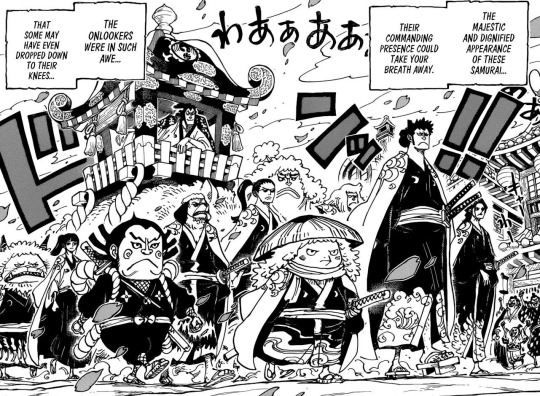

And just like how Oden was still pretty sassy even after getting all "cleaned up", so was Nobunaga. It wasn't his father that he met though, as his father had died then, but his father-in-law.


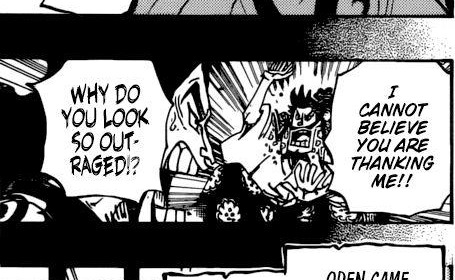
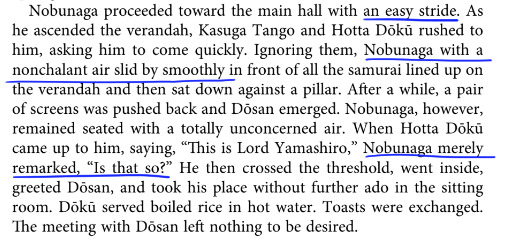
Another thing is that, there is a trope in fiction that Nobunaga does not discriminate the outcasts, and would not mind picking up random people off the streets to be his vassals. The most famous case in point is Toyotomi Hideyoshi, who would go on to become the ruler of Japan in later years.
Oden took in fellow troublemakers like Kin'emon and the minks as his followers, not discriminating against them like the other citizenry.
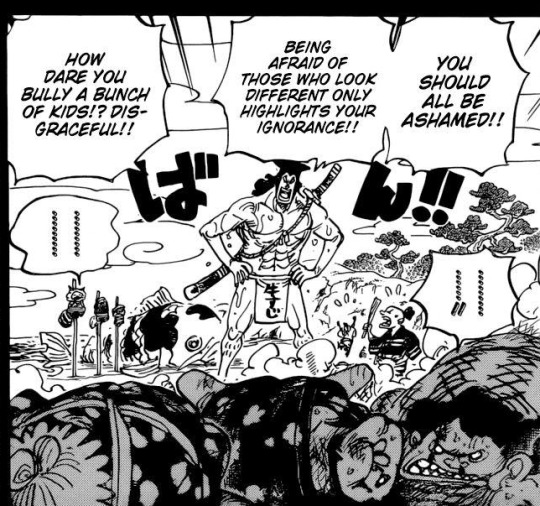
The final thing that made me really go "hmmm" is the Akazaya (Red Scabbards/Sheaths). Young Nobunaga himself had a red scabbard and his group of rowdy vassals had been "outfitted in red". This term is a bit unclear, I checked the raw and it only means something to the effect of "army in red", and it doesn't say if that means their clothes, armour, or weapons.
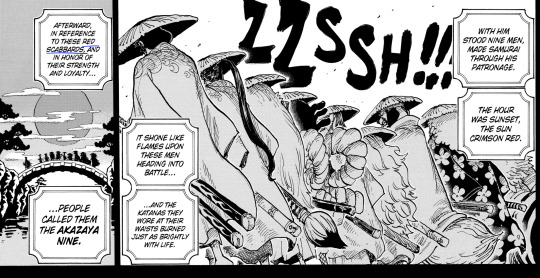

Either way, I specify "Young" because the rest of Nobunaga's life has nothing to do with Oden in One Piece. If anything, Nobunaga's later vicious career reminds me more of Germa, but that is neither here nor there.
Plus, younger Koudzuki Sukiyaki happens to somewhat look like the ukiyoe of Oda Nobunaga, take that as you will:

Hey look, Sukiyaki even has the flowery patterns on his coat too.
As a bonus, the fan Wiki has noted that Oden and the Koudzuki family story seems to also take inspiration from the deity Susanoo. What with the whole saga being centred on the fight against "Orochi", like how Susanoo fought against and defeated Yamata no Orochi.
So, you see the flower patterns on the ukiyoe above? That's the Oda family's house crest. And guess what? It is also the divine crest of Susanoo:
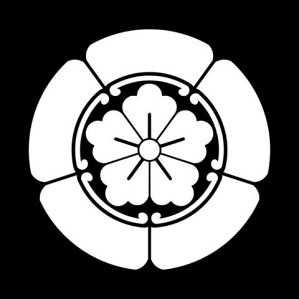
Legends say the Oda family ancestors were shrine priests or strong believers of Susanoo, and a Susanoo shrine was declared "the ancestral Oda family shrine".
Maybe sensei knew of this and took inspiration from both Oda Nobunaga and Susanoo to create the Wano storyline.
To be honest, this is why I somewhat wondered if Germa specifically has connection to Wano, like maybe they had ancestors from Wano? Same historical inspiration, Sukiyaki weirdly looks like Judge, and so on.
But like I said, Law and Zoro had inspiration from the same person, but I don't really see any signs to suggest they're relatives thus far, so maybe this is just a big nothing.
(unless the bombshell is that Zoro and Law are related somehow)
7 notes
·
View notes
Text
#only the most important questions here at spoondick llc#no - Izzy doesn't count. He was always going to stir shit.#but he's not THE big bad#my modest contribution to fandom#ofmd#our flag means death
8 notes
·
View notes
Photo

Roche Braziliano Roche Braziliano was a Dutch pirate born in the town of Groningen. His pirate career lasted from 1654 until his disappearance around 1671. He was first made famous in Alexandre Exquemelin's 1678 book The Buccaneers of America; Exquemelin did not know Braziliano's real name, but historians have found he was probably born as Gerrit Gerritszoon and that he and his parents moved to Dutch-controlled Brazil.[2] He is known as "Roche Braziliano", which in English translates to "Rock the Brazilian", due to his long exile in Brazil. Pirate career Roche Braziliano was a notoriously cruel buccaneer who operated out of Port Royal, Jamaica. He was a privateer in Bahia, Brazil, before moving to Port Royal in 1654. He led a mutiny and adopted the life of a buccaneer. On his first adventure he captured a ship of immense value and brought it back safely to Jamaica. He eventually was caught and sent to Spain, but he escaped with threats of vengeance from his followers. He soon resumed his criminal career, purchasing a new ship from fellow pirate François l'Olonnais and later sailing in company with Sir Henry Morgan and Joseph Bradley among others. Braziliano's first mate Yellows eventually became a captain in his own right, sailing with Braziliano, Morgan, and others in raids against the Spanish. Atrocities Drunken and debauched, Braziliano would threaten to shoot anyone who did not drink with him. He roasted alive two Spanish farmers on wooden spits after they refused to hand over their pigs. He treated his Spanish prisoners barbarously, typically cutting off their limbs or roasting them alive over a fire. Fate After 1671, Braziliano was never seen or heard from again. To this day, nobody knows what became of the Dutch pirate. Whether he (and his vessel and men) were lost at sea in a brutal storm, was secretly captured, or possibly retired and lived the rest of his life in anonymity is a matter of debate. Popular culture · A pirate named Roc Brasiliano was portrayed by Anthony Quinn in the 1952 swashbuckler film Against All Flags. https://www.instagram.com/p/Ch-D1oEL1gI/?igshid=NGJjMDIxMWI=
2 notes
·
View notes
Photo

François L'Olonais
François L'Olonais (también escrito L'Olonnais o L'Ollonais, c. 1630-1668), de nombre real Jean-David Nau, fue un bucanero y pirata francés que operaba desde Tortuga, en La Española. En 1667, atacó Venezuela, que entonces formaba parte de la Corona española, y su reputación de crueldad sádica fue tal que se lo conoció como el "flagelo de los españoles". L'Olonais continuó con su saqueo en la bahía de Honduras, pero finalmente fue masacrado y devorado por los caníbales locales.
Leer más...
0 notes
Photo
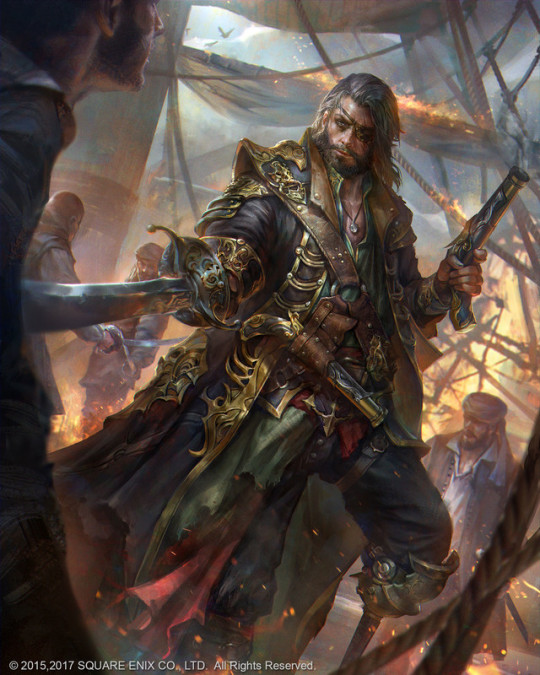
François l'Olonnais Pirate
Pirate illustration for Mobius FF. Wonder why client always chose the composition sketch that i don't really like. =0.
jeremy chong
99 notes
·
View notes
Note
does roronoa mean anything in particular? have a great day, love your bloog
yeah but it’s not a word- it’s the japanese pronunciation of the surname of historical french pirate françois l'olonnais (l'olonnais -> pronounced like lolonoa -> rendered by japanese L/R conflation as roronoa).
#theres a few other characters named after irl pirates#blackbeard obviously#but also bonney and kidd and drake and uhh most of the other supernovas iirc#jonny answers#one piece#not japanese#or not really#zoro#oda's name game on point
142 notes
·
View notes
Photo

François L'Olonnais
François L'Olonnais (également orthographié L'Olonnois ou Lolona, vers 1630-1668), de son vrai nom Jean-David Nau, était un flibustier et pirate français qui opérait depuis Tortuga sur Hispaniola. En 1667, il attaqua le Venezuela, qui faisait alors partie de l'Espagne, et sa réputation de cruauté sadique était telle qu'il fut surnommé le "fléau des Espagnols". L'Olonnais poursuivit son pillage dans la baie du Honduras, mais il fut finalement massacré et mangé par des cannibales locaux.
Lire la suite...
1 note
·
View note
Text
Samurai references in One Piece
Even when this is "short" this took me a long time to made but I finally finished it. I know that maybe I do not have ALL the references, but I'll mention the ones I've been seeing since I'm watching One Piece again. Also you'll read a lot about Zoro because he seems to be the character in which Eiichiro Oda likes to represent these warriors. I couldn't avoid pointing them out, especially since we're actually in Wano, to show you all a little of the influence they have in One Piece (at least in this arc.. or just in Zoro...). Of course there'll be manga spoilers.
1. The breath of all things.

While Zoro and Daz Bones were fighting in Arabasta, Zoro sees that he is at a disadvantage against his rival because this one is the user of the Devil fruit of steel, and that is a material that he wasn't capable of cutting. After a few attempts, he remembers a particular moment from his childhood about one of the lessons that his teacher and Kuina's father, Koshiro, teach him after a young Zoro asks if it is possible to cut steel. Koshiro gives him a demonstration when he tries to cut a piece of paper with his sword, but fails. After receiving a confused look from his student, he says what is in the pic beneath.
This teaching is inspired by one of the legends of Masamune Ozaki. In this story, Masamune (Who was not a samurai but a blacksmith who still was closely related to them) is challenged by his disciple Muramasa Shinji to see who of the 2 is the best blacksmith in Japan. Masamune accepted the challenge and after days of dedication and effort he created Yawarakai Te (Soft Hands / 柔らかい手). Muramasa also worked tirelessly and, finally, shaped Juuchi Yosamu (10,000 cold nights / 十千夜寒).
To test the value of each of them, Masamune and Muramasa were summoned on the riverbank one day at dawn. Once there, Muramasa submerged the first the tip of his sword in the water, against the current. Juuchi Yosamu, the Muramasa blade, cut everything that came close to its edge: it split the leaves that floated in the river and cut in half the fish that swam nearby. It even cut the morning air and the same sunlight. Masamune recognized with a deep reverence the great work of his disciple Muramasa. Indeed: there could not exist in all of Japan a sharper blade than that blade and only a Grand Master could make a sword like Juuchi Yosamu. But now his turn had come. He closed his eyes for a few moments and unsheathed Yawarakai Te. The brightness of the soft forging of his blade was reflected on the water while the old blacksmith dipped the tip of his sword into the river. And, then ...
Nothing happened because the fish that came close to Masamune's sword swam peacefully around him, without getting hurt. The leaves that floated down the river collided with it, turned on themselves and followed their course where the current led without splitting or cutting. Sunlight shone on the sword and the wind whistled softly as it struck its edge. Muramasa began to laugh at his master's sword. "You are no longer able to make a sword that really cuts. Now the best blacksmith in Japan is me" he said. Masamune did not answer. He drew his sword from the water and, still smiling, dried it first and then put it in its holster.
An old monk who had seen everything from the other shore said:
"There is a sword that is very well made, that is very beautiful and sharp, but is eager to cut and does not discriminate against who or whom. But the other sword is undoubtedly more beautiful and more perfect because its edge is still finer and does not need to cut what is innocent and does not deserve to be cut. There is a sword that takes away life and another sword that gives it. "
Note: Of course this is only a legend since Masamune Ozaki and Muramasa Shinji are many years apart (almost 100 I suppose), so I understand they did not even know each other, but you get the point.
2. The Kitetsu.

The kitetsu are a "trio" of Yōtō ( cursed swords / 妖刀) that are said to bring misfortunes to their owners until they find death in horrible ways. They are demonic swords whose thirst for blood is insatiable and whose edge and ease to cut things are incredible, almost incomparable.
Now, this is related to one of the aforementioned blacksmiths, specifically with his clan, the Muramasa. Muramasa Shinji was a person of unstable and violent character, it was said that his swords leaves, shorter, more curved and more affiliated than those of Masamune, instilled in the warriors that carried them an uncontrollable desire to kill.
But the swords of Muramasa fell into disgrace when Tokugawa Ieyasu arrived at the shogunate, at the beginning of the 17th century, due to the many misfortunes that these swords caused to his family: the Kaishaku (end of the seppuku ritual in which the assistant beheads the suicidal with a katana) of Ieyasu's son, Nobuyasu, was made with a Muramasa; in his childhood, Ieyasu was wounded with a Tantō Muramasa; Ieyasu's grandfather was killed with a Muramasa katana; Ieyasu's father was attacked with a wakizashi Muramasa. Therefore, the shogun banned the use of Muramasa clan weapons in Japan. Even the Bugyō (commissioner / 奉行) Nagasaki, who was a collector of Muramasa weapons despite the ban, was executed under direct orders from the Shōgun (army commander/ 将軍) Tokugawa Ieyasu for considering this as an obvious conspiracy against his clan.
For all this, they said, Muramasa's katanas brought their owners misfortunes and unnecessary deaths, while those of Masamune were only unsheathed when the situation inevitably required it.
3. Taken from movies.
Maybe some of you already know it, but I do not lose anything mentioning it. Issho (or Fujitora) is based on Zatōichi (座頭市), the protagonist of a television series and a large number of films about a blind, but very skilled swordsman.
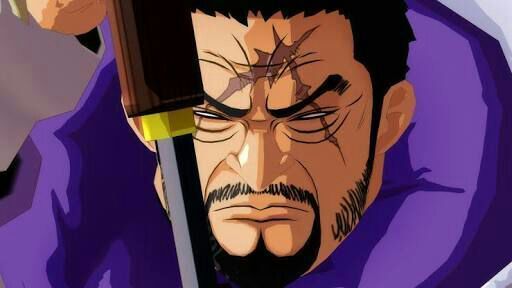
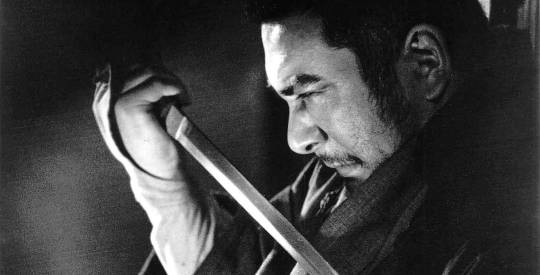
Literally is the same thing without scars, they even have the same sword...
However, the designs are not the only thing that Oda has been inspired to add to his work. There are a number of thoughts/quotes that he has also taken from different movies like this one, that he says is one of his favorites, called Shichinin no samurai (The Seven Samurais/ 七人の侍).
I won't make much spoilers. In one scene of the film, while the protagonists are looking for another samurai to join them, they hear that one has arrived at the town. To test if he's worth of joining them, one of them hides to the side of the door to ambush him, saying: "If he is a true swordsman he will be able to dodge it, a samurai never lets alcohol take control on himself". Does it remind you of something?
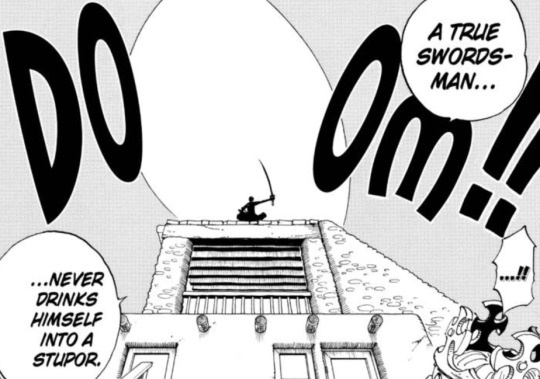
4. Roronoa Zoro's "true" inspiration.
Even though we all know Zoro is based on François l'Olonnais, who was the cruelest pirate of the Caribbean Sea; I can say that he is also a little based on Date Masamune.
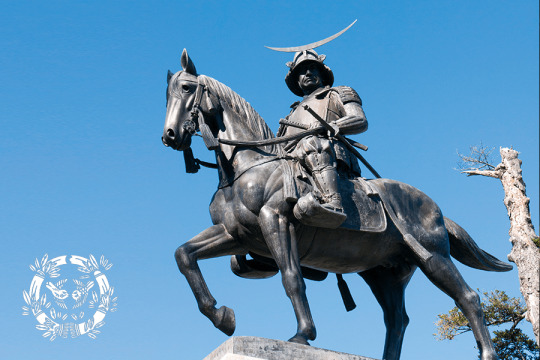
Excellent military tactician, was popularly identified because of the lack of one of his eyes, commonly being called "dokuganryū" (Dragon of a single eye/ 独眼 竜).
The exact cause for which he lost his entire eye is not known, but it is said that as a child he lost it because of smallpox and to save himself he took it off. After this, his mother told him he could never become a warrior, explaining to Masamune's father that having just one eye already put him in an abyssal disadvantage on the battlefield. Because of that, he swore he would never let anything else get over him, not even something like an illness.
At the young age of 17 or 18 years old, he took his father's place as the leader of Date's clan; later becoming one of the most powerful Daimyō (大名) of the old Japan.
This fiery samurai was also known because of his cruelty and cold personality. Not caring who he was talking to, he'd always be a prepotent and shameless man who gained the respect, but mostly fear, of those who were around him.
5. Pirate hunter's journey.
As we all know, in the begining of the serie when Luffy asked Zoro why he sailed, the swordsman told him he was looking for someone (Dracule Mihawk) but then got lost. Sailing to the sea to find recognition and become the greatest swordsman, as he promised to Kuina, sounds like certain practice called Musha shugyō (warrior training/ 武 者 修行) that's based on traveling or pilgrimage to which the ancient samurai were ascribed. A practitioner of this concept has to roam around Japan practicing and honoring his abilities without the protection of his family or his school, all alone and exposing himself to the dangers necessary to prove his worth. The possible activities of the adventurer could include training with other schools, fighting a duel, working as a bodyguard/mercenary, and looking for a Daimyō to serve.
Soooo he found a "Daimyō" to live and to die for.

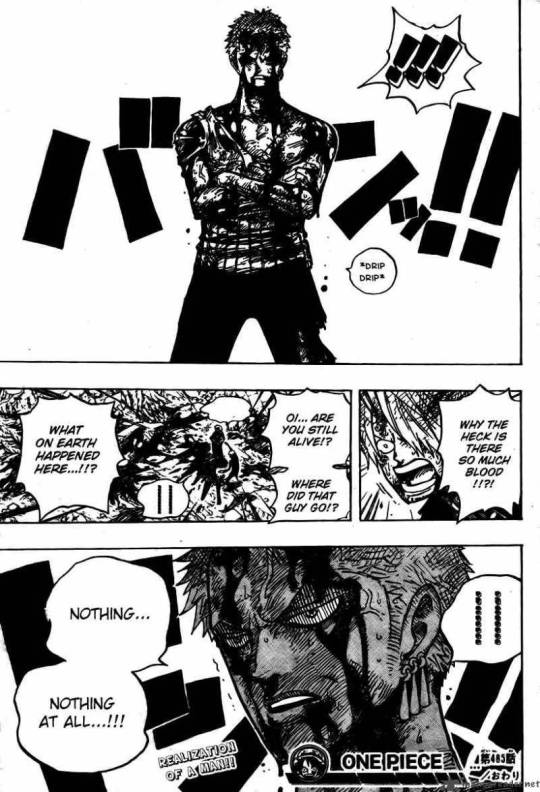
Note: I'm not saying Zoro is a samurai, in fact and sadly, he isn't. I repeat, I'm just pointing things that I can relate to them.
6. Kaidan.
Kaidan (怪談) is a Japanese word consisting of two kanji: 怪 (kai) meaning “strange, mysterious, rare, or bewitching apparition" and 談 (dan) meaning “talk” or “recited narrative.”In its broadest sense, kaidan refers to any ghost story or horror story, but it has an old-fashioned ring to it that carries the connotation of Edo period Japanese folktales. Kaidan entered the vernacular during the Edo period, when a game called Hyakumonogatari Kaidankai (A Gathering of One Hundred Supernatural Tales / 百物語怪談会 ) became popular. This game led to a demand for ghost stories and folktales to be gathered from all parts of Japan and China.
Originally based on didactic Buddhist tales, Kaidan often involve elements of karma, and especially ghostly vengeance for misdeeds. Onryō (Japanese vengeful ghosts / 怨霊) are far more powerful after death than they were in life, and are often people who were particularly powerless in life, such as women and servants. You all know who were servants? There's certain transtalion or meaning to samurai that says "those who serve in close attendance to the nobility"; Not only that, since Kaidan appeared in Edo period these warriors are the co-protagonists of many of those stories. If we look up at some of those stories we can conclude something; at least two of them are the "inspiration" to certain samurais in Wano and they are Kin'emon and O-kiku.
We need to be clear on something, they are considered ghosts by the people of Wano that seek to avenge Oden's death so thinking that Oda made this on purpose is pretty logic, right?
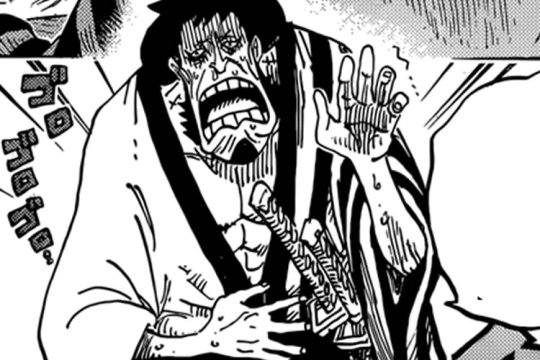
Lets start with Kin'emon. He's, at least a bit, inspired in Botan Dōrō (The Peony Lantern / 牡丹燈籠)
This tale tells that on the first night of Obon, a beautiful woman and a young girl holding a peony lantern stroll by the house of the widowed samurai Ogiwara Shinnojo. Ogiwara is instantly smitten with the woman, named Otsuyu and vows an eternal relationship. From that night onward, the woman and the girl visit at dusk, always leaving before dawn. An elderly neighbor, suspicious of the girl, peeks into his home and finds Ogiwara in bed with a skeleton. Consulting a Buddhist priest, Ogiwara finds that he is in danger unless he can resist the woman, and he places a protection charm on his house. The woman is then unable to enter his house, but calls him from outside. Finally, unable to resist, Ogiwara goes out to greet her, and is led back to her house, a grave in a temple. In the morning, Ogiwara's dead body is found entwined with the woman's skeleton.
Why I relate Kin'emon with this story? To be honest it reminded me of him for dumb reasons ;;; The woman's name sounds like Kin'emon's wife's name, O-tsuru. Also I have the feeling that he won't be able to resist any longer being apart with his wife, wich he seems to love very much. Or not necessarilly because he wants to be with her but to warn her to run away at some point and someone will notice and bla bla bla.

Now, O-kiku is inspired by the history of Banchō Sarayashiki (The Dish Mansion at Banchō / 番町皿屋敷 ) that tells that once there was a beautiful servant named Okiku. She worked for the samurai Aoyama Tessan. Okiku often refused his amorous advances, so he tricked her into believing that she had carelessly lost one of the family's ten precious delft plates. Such a crime would normally result in her death. In a frenzy, she counted and recounted the nine plates many times. However, she could not find the tenth and went to Aoyama in guilty tears. The samurai offered to overlook the matter if she finally became his lover, but again she refused. Enraged, Aoyama threw her down a well to her death.
It is said that Okiku became an Onryō who tormented her murderer by counting to nine and then making a terrible shriek to represent the missing tenth plate – or perhaps she had tormented herself and was still trying to find the tenth plate but cried out in agony when she never could. In some versions of the story, this torment continued until an exorcist or neighbor shouted "ten" in a loud voice at the end of her count. Her ghost, finally relieved that someone had found the plate for her, haunted the samurai no more.
In some versions of the tale, Okiku is a maid who incurs her mistress' jealousy. Her mistress breaks one of dishes that Okiku is responsible for and Okiku commits suicide. Similar to the other versions, her ghost is heard counting the plates, but her mistress goes insane and dies.
Did you notice the same name, that in her first apparition she is holding a plate and that she refuses someone who's looking for her to be his lover? Hmmm.
7. Extras.
These are just mentions so I'll compilate them here.
⦁ Zoro's name in Wano is Zorojuro, which sounds a lot like Sanjuro, the name of the protagonist from another samurai movie called Yojimbo (which probably Zoro got his personality from); casually made by the same director from The seven samurais, and a lot more movies about these warriors, Akira Kurosawa.
⦁ It's possible that Shuusui is based on, it is said to be, the best sword ever made by Masamune Ozaki, called Honjo Masamune. I think this sword was "stolen" and is still lost.
⦁ Zoro's way of seeing the world is absolutely based on Miyamoto Musashi's lessons writen on his book Go Rin no Sho (The Book of Five Rings/ 五輪書). Not only that, Musashi felt that he won his duels not because he had mastered the strategy, but because he was stronger, prepared or just lucky... we all know Zoro likes to leave all to luck.
⦁ Vivi calls Zoro "mr. Bushido". Bushidō (武士道) is a strict and particular ethical code to which many samurai gave their lives, which demanded loyalty and honor until death. If a samurai failed to maintain his honor, he could recover it by practicing seppuku.
⦁ O-Tama saying that is a disgrace for a warrior to feel hunger is also said in The Seven Samurais.
⦁ The Gorōsei (The Five Elders / 五老星) the leaders of the World Government and, as such, the world's rulers and the highest authority only below Im, are based on The Council of the Five Regents, or council of the five great elders (go-tairō / 五大老). This was a council formed by Toyotomi Hideyoshi to govern Japan instead of his son, Hideyori, until he came of age. Hideyoshi chose his five most powerful daimyō for this task: Ukita Hideie, Maeda Toshiie, Uesugi Kagekatsu, Mōri Terumoto and Tokugawa Ieyasu. With the creation of the council formed by five people, Hideyoshi hoped that the different components of the same one would be balanced, preventing that none of them took control of the power. However, almost immediately upon the death of Hideyoshi in 1598, the regents were divided into two groups: Tokugawa on the one hand, and the other four on the other. The war, however, did not begin until the mid-1600s, ending the same year at the Battle of Sekigahara, where a difficult peace was agreed upon that left Hideyori alive and in control of Osaka Castle.
⦁ It was said that Miyamoto Musashi, the most famous samurai of all time, could win any duel with one look. Ehem... Haoshoku haki?
⦁ The Iaidō (居合道) is a Japanese martial art related to the unsheathing and sheathing of the katana. It was practiced by the samurai, especially in the Edo period. These techniques arise mainly to be able to attack or defend at the same time that it was unsheathed, beginning therefore the confrontation with the weapon still in the saya (sheath) and unsheathing with the appropriate speed to attack or counterattack the opponent without giving him time to react. The main idea of Iaidō is to be able to react correctly to any unexpected situation. The first letter 'I' has as a translation of its ideogram the meaning of Spirit, Being, Will and also Intention, therefore, decomposing the term Iaidō we find its philosophical meaning as "the path of the harmony of the Being or the path of union of the spirit "('I' is spirit, 'ai' unite or harmony, and the suffix 'dō' way). I don't know about you but it reminds me a bit of the meaning of Wado Ichimonji (Straight Road of the Harmony / 和道一文字); of course not ignoring that this style is used sometimes in the serie.
⦁ In the second point "the Kitetsu", I also mentioned that there was a certain time in Japan when Tokugawa Ieyasu banned muramasa's swords around the country. Well, in chapter 926 we were shown that civilians couldn't carry weapons because that would be a clear statement of rebellion, just saying.
⦁ Ishho is based more in a Sōhei (Warrior monk / 僧兵) than in a Samurai.
⦁ Even when Miyamoto Musashi was known for fighting with 2 Bokken, he had an actual sword. The Tsuba of this sword, now in the Art Musseum of Fukuoka, is a little bit similar to Wado Ichimonji's tsuba.
⦁ Shimotsuki Yasuie or better known as Tonoyasu or Yasu, the happy man from Wano that lives in Ebisu, was shown to be based on the Shōgun mentioned in the second point, Tokugawa Ieyasu. The most famous Shōgun in the story of Japan.
⦁ Gyukimaru on Oihagi Bridge is based on Saitō Musashibō Benkei (西塔 武 蔵 坊 弁 慶 1155 - 1189), popularly called Benkei (弁 慶), Was a Sōhei who was under the orders of the samurai Minamoto no Yoshitsune. He is generally presented as a man of great stature, very strong and loyal, and is one of the favorite characters of Japanese folklore. Tells the story that Benkei would have been located on the bridge Gojo in Kyoto, where he challenged each warrior who passed, taking the sword of their defeated opponents, reaching a total of about 999 swords. In his 1000th duel, Benkei was defeated by Minamoto no Yoshitsune, son of the warlord Minamoto no Yoshitomo. Therefore, he became a warrior of Yoshitsune and fought alongside him in the Genpei war against the Taira clan. Curious, don't you think?
⦁ The relationship between O-kiku/Kikunojo and Kin’emon implies that they’re very close, we can see it in their flashbacks and even when they reunite, however, if we look at things in a more... real life way, we can say that their relationship is, or was, influenced by Shudô (衆道 ). Shudô was a samurai custom in which adult samurai engaged in pederastic relationships with younger samurai. This custom is most prominently seen, or discussed, in the Sengoku and Edo periods. The older man in the relationship, known as the nenja (念者), and the younger man, known by a variety of terms including wakashû (若衆), formed a close, tight personal relationship with one another. A nenja typically engaged in such relationships with only one wakashû at a time, and vice versa. Though much discussion today, based in modern/Western social mores about homosexual relationships, focus strongly on the homosexual sexual acts involved in the relationship, Shudô relationships went beyond this, and were strong personal and sentimental or emotional relationships, which involved as well strong elements of mentorship. Mentorship and training in the "warrior" lifestyle and values of the samurai was a major element of the relationship.
This is all I have so If there's something I missed please let me know, thanks for reading.
#I made this research until cap 943#so I still have to study recent chapters#Samurai#One piece#Wano#wano country#samurai references#samurai country#zoro#roronoa zoro#luffy#monkey d luffy#nami#sanji#usopp#brook#franky#chopper#jimbei#koshiro#o-kiku#kikunojo#kin'emon#yasuie#yasu#momonosuke#kozuki momonosuke#kozuki oden#kozuki clan#komurasaki
92 notes
·
View notes
Photo

François L'Olonais
François L'Olonais (also spelt L'Olonnais or L'Ollonais, c. 1630-1668), real name Jean-David Nau, was a French buccaneer and pirate who operated from Tortuga on Hispaniola. In 1667, he famously attacked Venezuela, then part of the Spanish Main, and such was his reputation for sadistic cruelty, he was known as the 'Flail of the Spanish'. L'Olonais continued his rampage for plunder in the Bay of Honduras but was ultimately butchered and eaten by local cannibals.
Continue reading...
42 notes
·
View notes
Photo

Pirate François L'Olonnais, 1678- Jean-David Nau, better known as François l'Olonnais, was a French Pirate active in the Caribbean during the 1660s
Seven hundred pirates enlisted with l'Olonnais when he mounted his expedition, to the Central American mainland. In 1667, after pillaging Puerto Cavallo on the coast of Honduras, l'Olonnais was ambushed by a large force of Spanish soldiers while en route to San Pedro. Only narrowly escaping with his life, l'Olonnais captured two Spaniards. Exquemelin wrote:
"He drew his cutlass, and with it cut open the breast of one of those poor Spanish, and pulling out his heart with his sacrilegious hands, began to bite and gnaw it with his teeth, like a ravenous wolf, saying to the rest: I will serve you all alike, if you show me not another way".
Horrified, the surviving Spaniard showed l'Olonnais a clear route to San Pedro. L'Olonnais and the few men still surviving were repelled, and retreated back to their ship. They ran aground on a shoal, in the modern-day province of Panama. Unable to dislodge their craft, they headed inland to find food. They were captured by the indigenous Kuna tribe, which killed l'Olonnais. Exquemelin wrote that the natives:
"...tore him in pieces alive, throwing his body limb by limb into the fire and his ashes into the air; to the intent no trace nor memory might remain of such an infamous, inhuman creature".
At some point before his death he sailed briefly to Jamaica to sell off a prize ship. It was purchased in 1668 by Roc Brasiliano, who sailed with Jelles de Lecat against the Spanish alongside famous Pirate Henry Morgan.
PHOTO: Half-length directed to right but looking at the viewer, long hair, moustache and goatee, holding a sword, an attack of a coastal town in the background; illustration to page 47 of Alexandre Exquemelin's "De Americaensche © The Trustees of the British Museum- Red stamp on verso: '9 JY 60', indicating 1860 acquisition by the British Library. Transferred to the department from the British Library in 1889.
#l'olonnais#pirate#pirates#henry morgan#spanish#spanaird#jenan-david nau#panama#indigenous#kuna tribe#1660's#1600's
11 notes
·
View notes
Photo

day III - the caribbean pirate
did you know ?
the name of Roronoa Zoro is inspired by the most tyrannical french pirate from Caribbean. His name was François L'Olonnais.
my pirate inktober 2018
1 - 2 - 3 - 4 - 5 - 6 - 7
#ok i'm late#inktober#pirateinktober#one piece#roronoa zoro#op graphic#illustration#art#pirate#inktober 2018
47 notes
·
View notes
Text
ceasar clown will join the blackbeard pirates
youtube
orojackson . com/threads/caesar-clown-theory . 14148/
Here we are to talk about Caesar Clown and his future with the strawhats.
D: Doesn't Zoro's name come from the famous pirate, "François l'Olonnais"?
O: I took the name from Francois l'Ollonais, said to be the cruelest of all the "Pirates of the Caribbean". That, along with Morgan and Alvida, are names derived from actual pirates.
As seen in SBS volume 4 Oda likes to model his characters after real pirates. So what pirate would Caesar model after, well here's the answer.
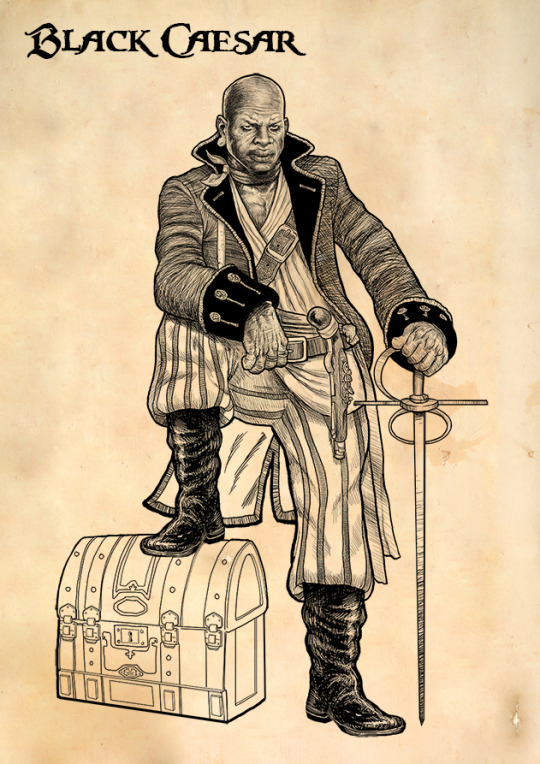
Wait there's more.....Black Caesar, according to traditional accounts, was a prominent African tribal war chieftain. Widely known for his "huge size, immense strength, and keen intelligence", he evaded capture from many different slave traders.

Law's height is 6'3 1/4'' and Caesar is over a foot taller than him which is pretty tall. Caesar is a logia and was able to derive the area of oxygen and can control gases so he is pretty strong, and buddy worked with Vegapunk the smartest man in OP to be introduced. There is no doubt that the marines wanted Caesar's head but none of them captured him which is parallel to the slave traders.So far he has made all these requirements.
Caesar was finally captured when he and twenty of his warriors were lured onto a ship by a slave trader.
Caesar was captured by the strawhats and his centaur group was captured by smoker. It should be noted that Smoker is known as White Chaser or White Hunter.
He began taking on more pirates over time and soon was able to attack ships on the open sea. He and his crew were often able to avoid capture by running into Caesar Creek and other inlets between Elliot and Old Rhodes Key and onto the mangrove islands.
As we all know Punk Hazard became a safe haven for Caesar and where he stayed for years avoiding capture. He also recruited the inmates and the brownbeard pirates also.
When Caesar discovered what was happening, he and his men attempted to charge their captors but were driven back by the well-armed sailors using swords and pistols.
Caesar and his team was defeated by the strawhats.
Although it took a considerable length of time for him and his warriors to accept their captivity, he was eventually befriended by a sailor who was the only man Black Caesar would accept food and water from.
It took about half a day I think to defeat Caesar and when big mom came he wanted to stay a captive if they protect him from Big Mom. Plus Sanji who is a cook has been close to CC lately.
As they neared the coast of Florida, the sudden appearance of a hurricane threatened to destroy the ship on the Florida Reefs. Recognizing the ship's imminent destruction, the sailor snuck below decks and freed Caesar. The two then forced the captain and crew into a corner, most likely at gunpoint, and boarded one of thelongboats with ammunition and other supplies. The wind and waves pushed them to shore where they waited out the storm, apparently the only survivors of the doomed ship.
The sudden apperance of Big Mom's ship threatened to destroy the sunny and we know that CC was involved in that awesome Combo that resulted in mist being made.
A few children reportedly escaped captivity, subsisting on berries and shellfish, and formed their own language and customs. This society of lost children give rise to native superstition that the island is haunted.
As we all know the giant children escaped the biscuit room where they were basically by themselves.
During the early 18th century, Caesar left Biscayne Bay to join Blackbeard in raiding American shipping in the Mid-Atlantic serving as a lieutenant on his flagship Queen Anne's Revenge. In 1718, after Blackbeard's death battling with Lieutenant Robert Maynard at Ocracoke Island, he attempted to set off the powder magazine as per Blackbeard's instructions. However, Caesar was stopped by one of the captives who tackled him as prepared to light a trail of gunpowder leading to the magazine. He struggled with the man below decks until several of Maynard's sailors were able to restrain him. Taken prisoner by Virginian colonial authorities, he was convicted of piracy and hanged in Williamsburg, Virginia.
biscayne makes me think of biscuits
@pernanegra @lovemizumikan @beif0ngs
#one piece#one piece theory#one piece theories#one piece theorys#op theory#op theories#op theorys#op meta#one piece meta#blackbeard pirates#one piece blackbeard#op blackbeard#kurohige#Marshall d. Teach#ceasar clown
5 notes
·
View notes